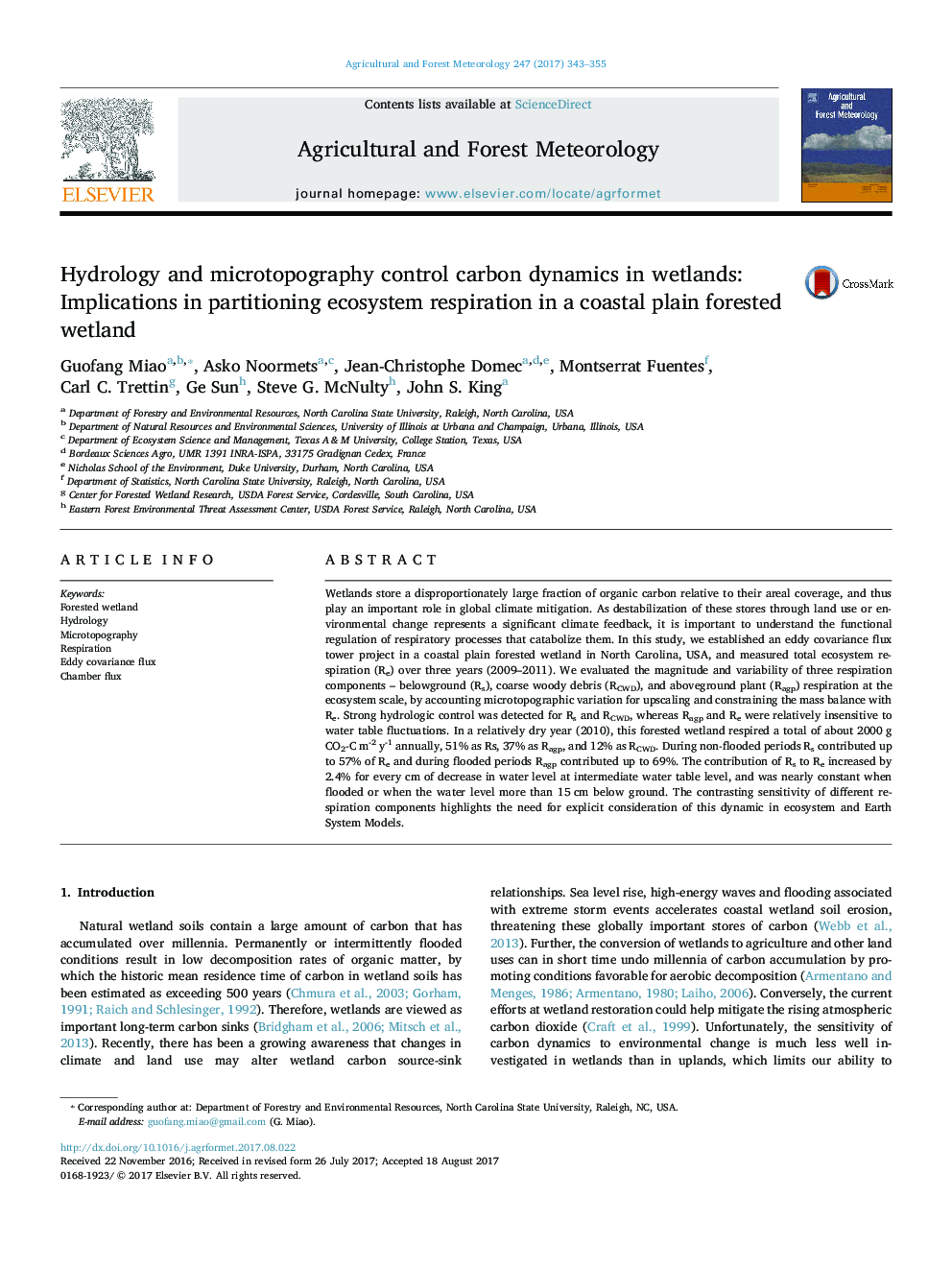| کد مقاله | کد نشریه | سال انتشار | مقاله انگلیسی | نسخه تمام متن |
|---|---|---|---|---|
| 6457796 | 1420854 | 2017 | 13 صفحه PDF | دانلود رایگان |
- Ecosystem respiration of a forested wetland is partitioned to three components.
- Hydrology and microtopography impact seasonal variation of respiration.
- Respiratory components respond to the fluctuation of water level differently.
- Respiration partitioning pattern distinguishes forested wetland from upland forest.
Wetlands store a disproportionately large fraction of organic carbon relative to their areal coverage, and thus play an important role in global climate mitigation. As destabilization of these stores through land use or environmental change represents a significant climate feedback, it is important to understand the functional regulation of respiratory processes that catabolize them. In this study, we established an eddy covariance flux tower project in a coastal plain forested wetland in North Carolina, USA, and measured total ecosystem respiration (Re) over three years (2009-2011). We evaluated the magnitude and variability of three respiration components - belowground (Rs), coarse woody debris (RCWD), and aboveground plant (Ragp) respiration at the ecosystem scale, by accounting microtopographic variation for upscaling and constraining the mass balance with Re. Strong hydrologic control was detected for Rs and RCWD, whereas Ragp and Re were relatively insensitive to water table fluctuations. In a relatively dry year (2010), this forested wetland respired a total of about 2000Â g CO2-C m-2 y-1 annually, 51% as Rs, 37% as Ragp, and 12% as RCWD. During non-flooded periods Rs contributed up to 57% of Re and during flooded periods Ragp contributed up to 69%. The contribution of Rs to Re increased by 2.4% for every cm of decrease in water level at intermediate water table level, and was nearly constant when flooded or when the water level more than 15Â cm below ground. The contrasting sensitivity of different respiration components highlights the need for explicit consideration of this dynamic in ecosystem and Earth System Models.
Journal: Agricultural and Forest Meteorology - Volume 247, 15 December 2017, Pages 343-355
